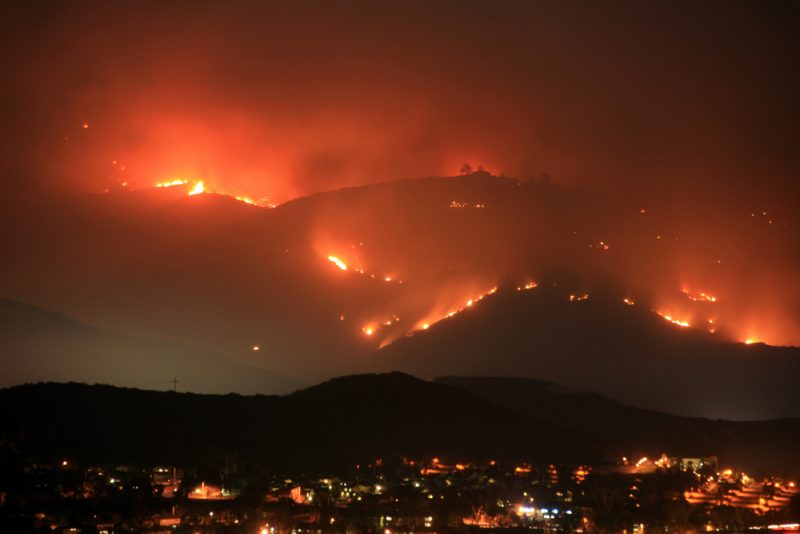Unprecedented Calif. wildfires test the electric grid despite preventative efforts by utilities

Intense wildfires that roared through Northern California this month tested the resiliency of the electric grid, and an increase in extreme weather events predicted by scientists could continue to challenge the utilities industry.
In the aftermath of wildfires in its service area in California, Pacific Gas & Electric Co. (PG&E), worked to restore power to more than 350,000 customers that lost electric service and 42,000 that had natural gas deactivated for safety reasons.
The utility has year-round programs in place to control vegetation growth near power lines.
The company manages around 123 million trees across 70,000 square miles of service area, and since 2014 PG&E has pruned or removed around 1.2 million trees per year. To do so, the company uses a combination of foot and aerial patrols equipped with remote sensing technology and inspects lines in high fire-danger areas as many as four times a year in some locations. In 2016, this resulted in the removal of around 236,000 dead or dying trees beyond the million-some annual figures, with numbers going up as the region’s drought lingers.
Further, PG&E has awarded millions to local California Fire Safe Councils to aid in the fight against wildfire spread due to improperly cared for trees.
Despite the safety efforts of the utilities industry, experts say the effects of climate change have led to an increase in extreme weather events, including wildfires in states like California.
“This was a weather event,” Cliff Mass, a University of Washington Professor of Atmospheric Sciences, said in an interview with Daily Energy Insider. “You get hit by winds at multiple locations and you have power lines that are vulnerable.”
In many parts of the world, including California, hotter and drier conditions are contributing to the growing risk of wildfires. “Wildfires are inevitably a consequence of several factors, including the weather, winds, and the condition of forests and underbrush, plus the proximate causes such as lightning or human activities,” the Union of Concerned Scientists (UCS) wrote in a June report.
In the case of the Northern California wildfires, winds gusted up to 96 mph on a 3,400 ft. peak about 20 miles north-northwest of downtown Santa Rosa, California, according to Mass. The area reported sustained winds of 85 mph — or 74 knots, which is well above the designation of hurricane force winds, at 64 knots.
Further, PG&E noted that “these destructive winds quickly dried out the lower levels of the atmosphere, bringing humidity down to below 15 percent,” fueling the rapid spread of the fire.
“What is really amazing about the winds at these sites, was that they were unprecedented: the strongest winds on record, with records going back to 1991 (Santa Rosa) or 1993 (Hawkeye),” Mass said in his own assessment. “And we are not talking about winds during the fall, but winds any time during the year. Even during the stormy winter season when powerful storms can cross the region.”
Mass said the extreme weather event produced the right flow regime that interacted with regional mountains to result in strong winds. It wasn’t something PG&E could have countered.
Although placing power lines underground is considered safer in wildfire-prone areas, PG&E has pointed to that option as being too costly to be realistic.
Putting in a new underground line would cost $1.16 million per mile, or more than double that of a new overhead line, and prices are even heftier in city limits. This data comes from assessments filed with state regulators by PG&E. Further, a 2015 San Francisco report noted that moving power lines underground in Oakland costs an average $2.8 million per mile. And what’s more, those costs are borne not by the company, but by customers.
Given that the utility runs more than 134,000 miles of lines across Northern and Central California, the cost would be in the hundreds of billions of dollars to move all overhead power lines underground.
